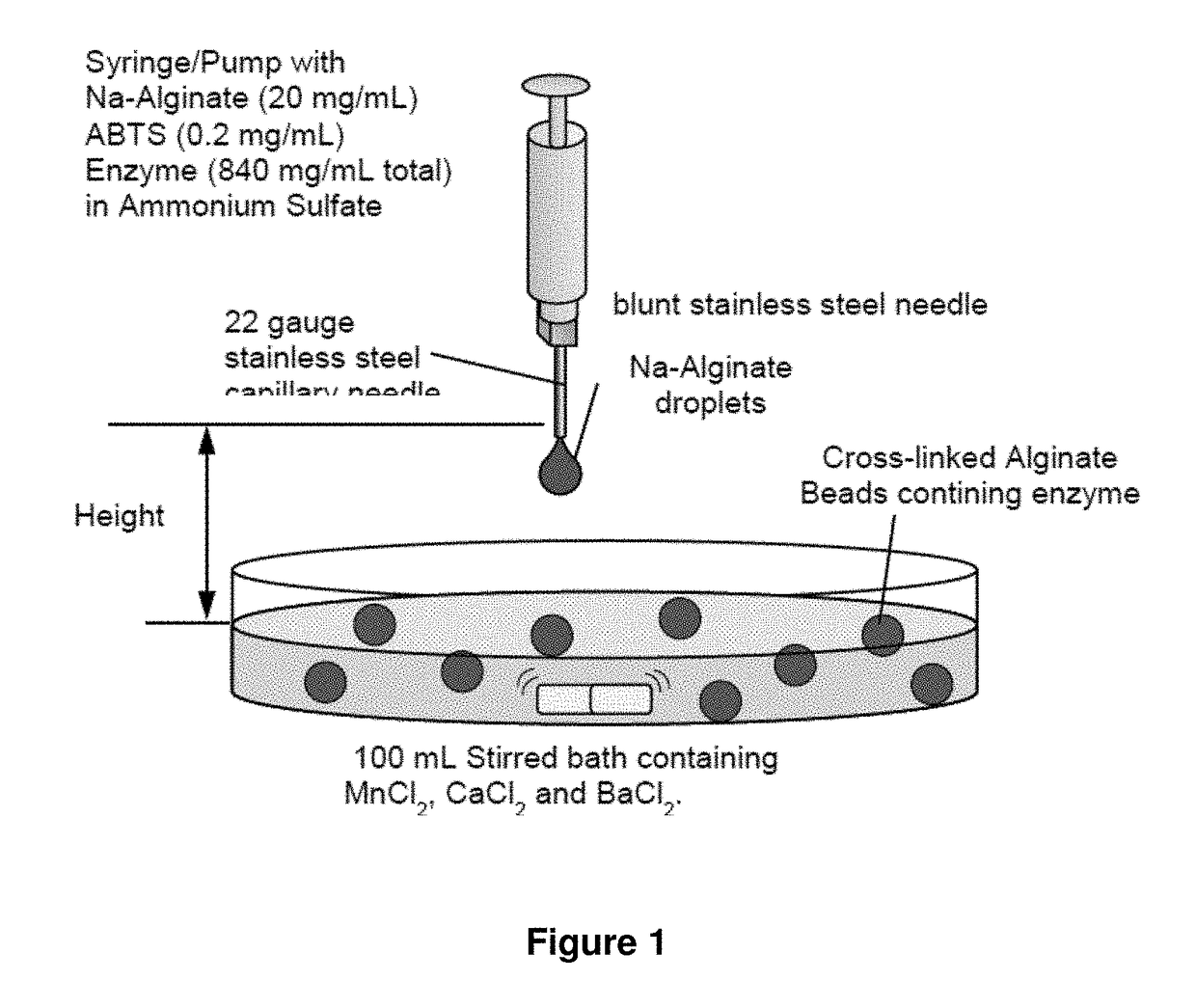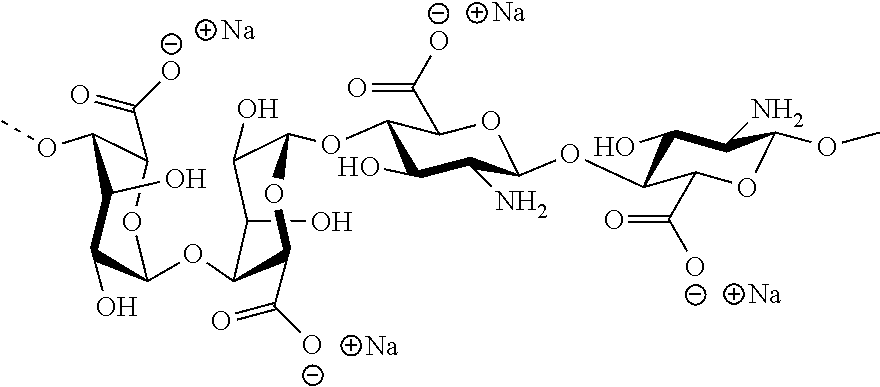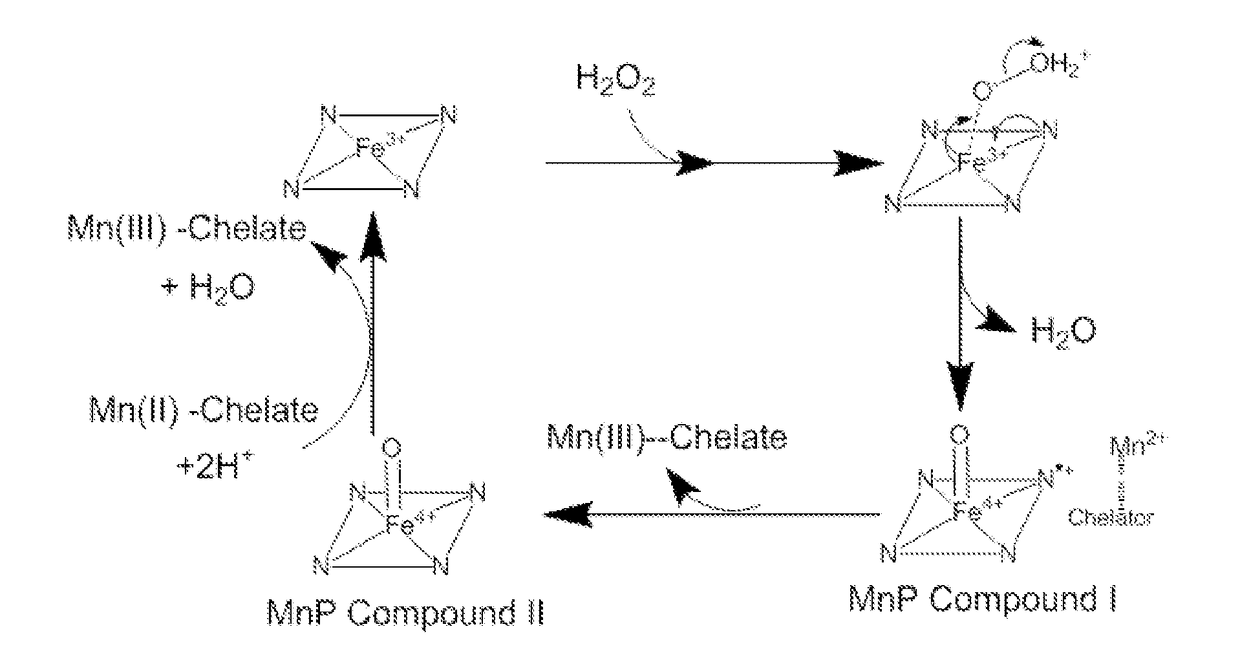Enzyme Formulation and Method for Degradation
a technology of enzymes and formulations, applied in the field of enzyme formulations and methods for degradation, can solve the problems of microbially mediated breakdown of heavy weathered total petroleum hydrocarbons (tph) and its limitations
- Summary
- Abstract
- Description
- Claims
- Application Information
AI Technical Summary
Benefits of technology
Problems solved by technology
Method used
Image
Examples
example
[0024]The process of stabilizing the enzyme is further exemplified in the following example. 10 mg of manganese peroxidase was rinsed into 10 g of alginate stock solution with 1 mL of deionized water. The suspension was mixed until dissolve with vial mixer and uniform. 10 grams of alginate mixture was then drawn up into a 10 mL syringe. Alginate drops containing manganese peroxidase were dropped using 0.3 mm gauge needle into the 50 mL calcium chloride solution using syringe pump (Cole-Palmer 78-0100C) with the retention time of 100 mL / h. Formation of encapsulated gel-like beads of alginate-enzyme complex was detected. The enzyme capsules were then left to settle at the bottom of the container and refrigerated at 8 C until use.
[0025]Formulating the Stabilized Enzyme for a Specified Application:
[0026]The invention further includes formulating the stabilized enzyme for specified application. In one example, the stabilized enzyme is formulated in a liquid or solid matrix. The matrix co...
PUM
 Login to View More
Login to View More Abstract
Description
Claims
Application Information
 Login to View More
Login to View More - R&D
- Intellectual Property
- Life Sciences
- Materials
- Tech Scout
- Unparalleled Data Quality
- Higher Quality Content
- 60% Fewer Hallucinations
Browse by: Latest US Patents, China's latest patents, Technical Efficacy Thesaurus, Application Domain, Technology Topic, Popular Technical Reports.
© 2025 PatSnap. All rights reserved.Legal|Privacy policy|Modern Slavery Act Transparency Statement|Sitemap|About US| Contact US: help@patsnap.com



